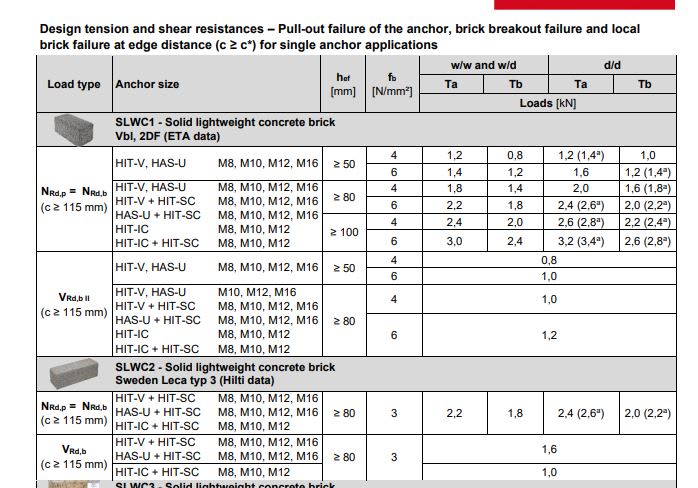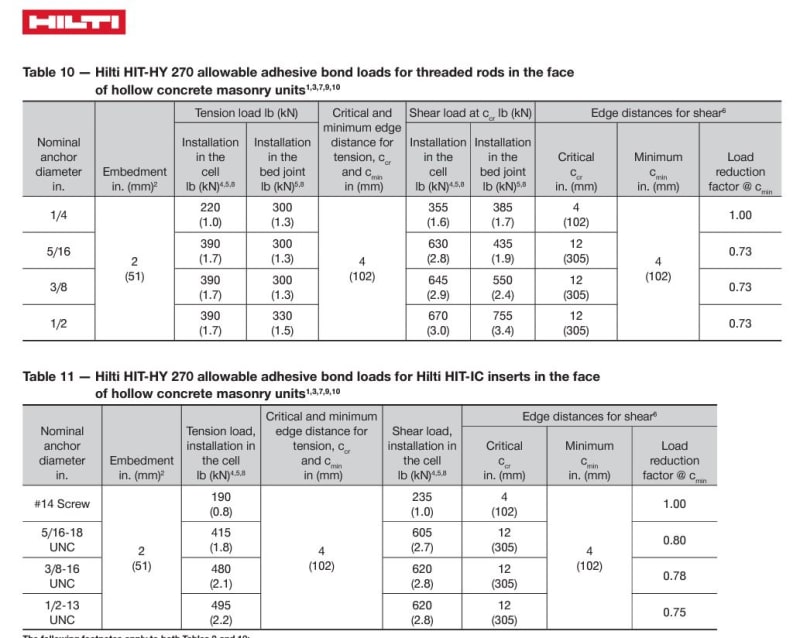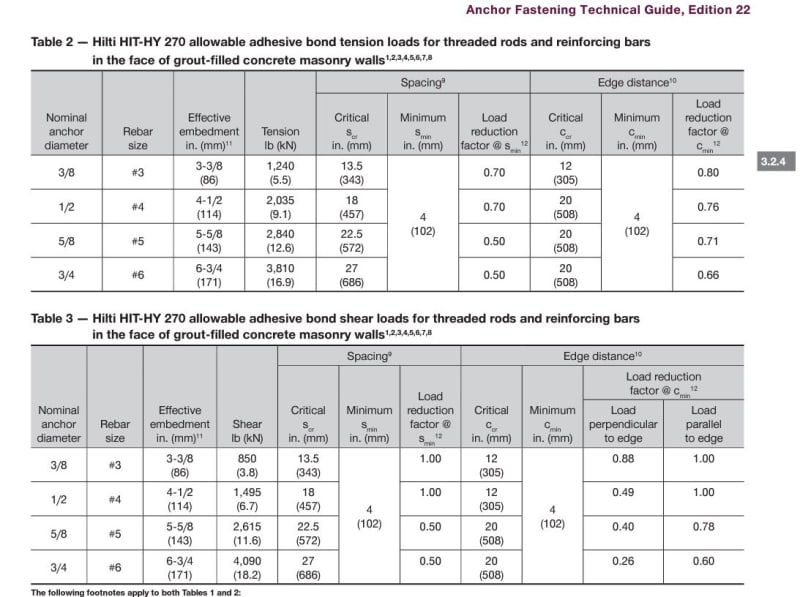Abuh001
Civil/Environmental
- Jan 24, 2018
- 28
Hi All,
I hope you are doing well. Recently, I have ]been getting involved with trying to support a beam off a 100mm blockwork wall using resin anchors. The load on the beam is a modest 10KN. However, having looked at both the guides for Hilti and Fisher the allowable shear force force on a 12mm resin anchor set in lightweight blockwork of strength 3.6N is 1KN or less. This doesn't sound right. An 8mm bolt in in 47mm of C16 timber (against the grain) gives a bearing value of this much (1.13KN). What are your thoughts? How do you design resin anchors set in masonry.
 [img
[img
Thanks.
I hope you are doing well. Recently, I have ]been getting involved with trying to support a beam off a 100mm blockwork wall using resin anchors. The load on the beam is a modest 10KN. However, having looked at both the guides for Hilti and Fisher the allowable shear force force on a 12mm resin anchor set in lightweight blockwork of strength 3.6N is 1KN or less. This doesn't sound right. An 8mm bolt in in 47mm of C16 timber (against the grain) gives a bearing value of this much (1.13KN). What are your thoughts? How do you design resin anchors set in masonry.

Thanks.


